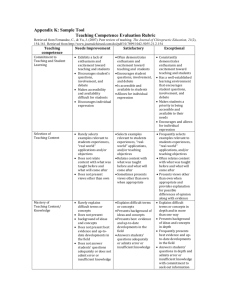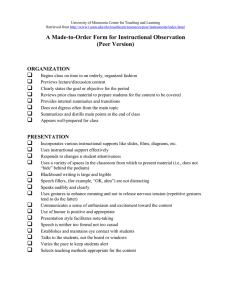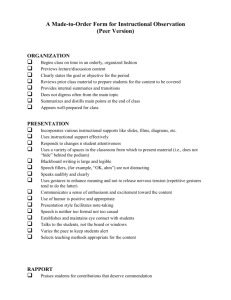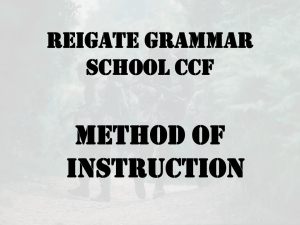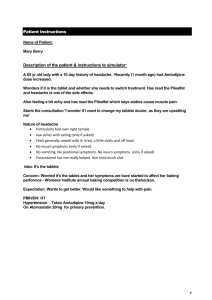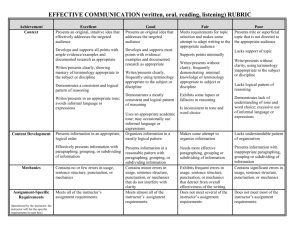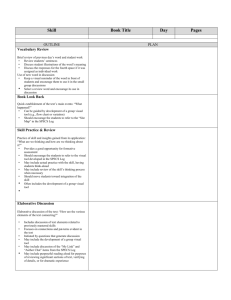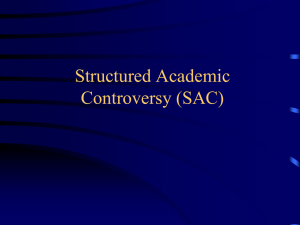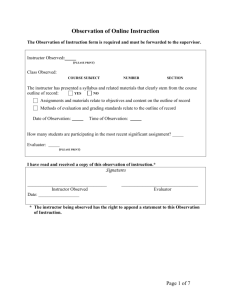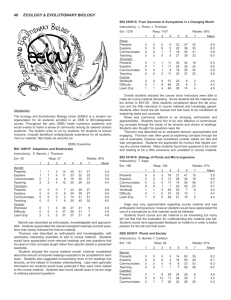Appendix A: Teaching Competence Evaluation Rubric*
advertisement
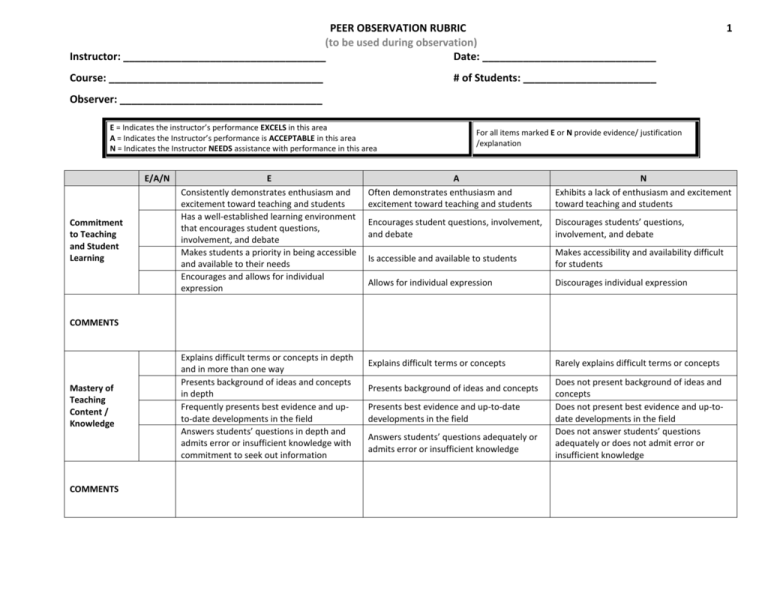
PEER OBSERVATION RUBRIC (to be used during observation) Instructor: ___________________________________ Date: ______________________________ Course: _____________________________________ 1 # of Students: _______________________ Observer: ___________________________________ E = Indicates the instructor’s performance EXCELS in this area A = Indicates the Instructor’s performance is ACCEPTABLE in this area N = Indicates the Instructor NEEDS assistance with performance in this area E/A/N Commitment to Teaching and Student Learning E Consistently demonstrates enthusiasm and excitement toward teaching and students Has a well-established learning environment that encourages student questions, involvement, and debate Makes students a priority in being accessible and available to their needs Encourages and allows for individual expression For all items marked E or N provide evidence/ justification /explanation A Often demonstrates enthusiasm and excitement toward teaching and students N Exhibits a lack of enthusiasm and excitement toward teaching and students Encourages student questions, involvement, and debate Discourages students’ questions, involvement, and debate Is accessible and available to students Makes accessibility and availability difficult for students Allows for individual expression Discourages individual expression Explains difficult terms or concepts Rarely explains difficult terms or concepts COMMENTS Mastery of Teaching Content / Knowledge COMMENTS Explains difficult terms or concepts in depth and in more than one way Presents background of ideas and concepts in depth Frequently presents best evidence and upto-date developments in the field Answers students’ questions in depth and admits error or insufficient knowledge with commitment to seek out information Presents background of ideas and concepts Presents best evidence and up-to-date developments in the field Answers students’ questions adequately or admits error or insufficient knowledge Does not present background of ideas and concepts Does not present best evidence and up-todate developments in the field Does not answer students’ questions adequately or does not admit error or insufficient knowledge 2 E/A/N Selection of Teaching Content & Meeting Teaching Objectives E Frequently selects examples relevant to students’ experiences, "real world" applications, and/or teaching objectives Often relates content with what's taught before and what will come after Presents views other than own when appropriate and provides explanation for possible differences of opinion along with evidence Teaching content and methods clearly meet stated objectives of syllabus and as stated by teacher A Selects examples relevant to students’ experiences, "real world" applications, and/or teaching objectives Relates content with what's taught before and what will come after N Rarely selects examples relevant to students’ experiences, "real world" applications, and/or objectives Does not relate content with what's taught before and what will come after Sometimes presents views other than own when appropriate Does not present views other than own Teaching content and methods are geared to stated objectives of syllabus and as stated by teacher Teaching content and methods do not meet stated objectives of syllabus or as stated by teacher Begins on time Does not begin on time and is disorganized Summarizes main points at the end of session Fails to summarize main points at the end of session Does not provide clear directions and procedures COMMENTS Organization & Classroom Management COMMENTS Begins on time in an orderly, organized fashion Summarizes and distills main points at the end of session Consistently explains directions and procedures Keeps students engaged in learning activities, moving between activities after ascertaining student readiness Explains directions and procedures Uses time appropriately, transitioning smoothly between activities Does not use time efficiently; inappropriate transition time between activities 3 E/A/N Instructional Materials E Incorporates various instructional supports like slides, visual aids, handouts, etc. Also provides references for materials presented when appropriate A N Incorporates various instructional supports like slides, visual aids, handouts, etc. Fails to provide students with instructional materials Uses a large variety of teaching strategies to address diverse learning styles and opportunities Responds to changes in student attentiveness with comfortable transition of teaching strategies Uses a variety of teaching strategies to address diverse learning styles and opportunities Fails to use a variety of teaching strategies to address diverse learning styles and opportunities Responds to changes in student attentiveness Fails to responds to changes in student attentiveness Consistently speaks audibly and clearly Speaks audibly and clearly Speech is inaudible and un-clear Models professionalism Is unprofessional and use of humor is negative and inappropriate Establishes and maintains eye contact with students Fails to establish and maintain eye contact with students Provides demonstrations as appropriate Does not provide demonstrations when needed Mentors students in life-long learning skills Does not promote lifelong learning Allows students to be independent learners Does not promote students to be independent learners COMMENTS Teaching Methodology and Presentation Models professionalism and use of humor is positive and appropriate Establishes and maintains eye contact with students while communicating a sense of enthusiasm toward the content Provides demonstrations as appropriate and has students demonstrate their understanding Routinely mentors students in life-long learning skills Guides students to be independent learners COMMENTS
